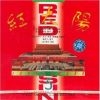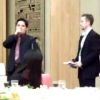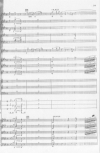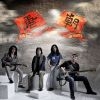Illustration:
ill. 2.12 (set: 2.11)
Author:
Jeffrey N. Wasserstrom
Date:
1999, May
Genre:
photograph
Material:
digital photograph, colour, original source: photograph, colour
Source:
Personal photograph, 1999.
Courtesy:
Jeffrey N. Wasserstrom
Keywords:
hero, model works, red, children, red sun, contemporary China
Little Heroes before Model Work Settings

Is Tan Dun’s ending then—similar to what we can find in some of the photographic backgrounds offered to Chinese parents for effective pictures of their “little heroes,” at tourist places as seen here—a carnivalization of the Cultural Revolution and its cultural aesthetics? In the case of Tan Dun, the immediate answer to the question is: “No.” According to the composer, the last movement of his composition is a lovesong to nature and the future. The colour red symbolizes for Tan Dun change, revolution and passion. In his view, the work ends in a transcendent and optimistic mode. Musically, this makes sense, as the last few bars are a recapitulation of the dance motif from earlier movements, and, even more significantly, the composition ends as it begins, the first word in the composition is “sun” and it ends in sunshine, too (cf. Gooi 2001:167). The work’s enigmatic title Red Forecast is to be read, in Tan’s own interpretation, as follows: the forecast for mankind in the future is a retrieval of lost ideals and passions, symbolized by the color red. There is certainty to his conviction; it is a forecast, a prediction indeed.



































